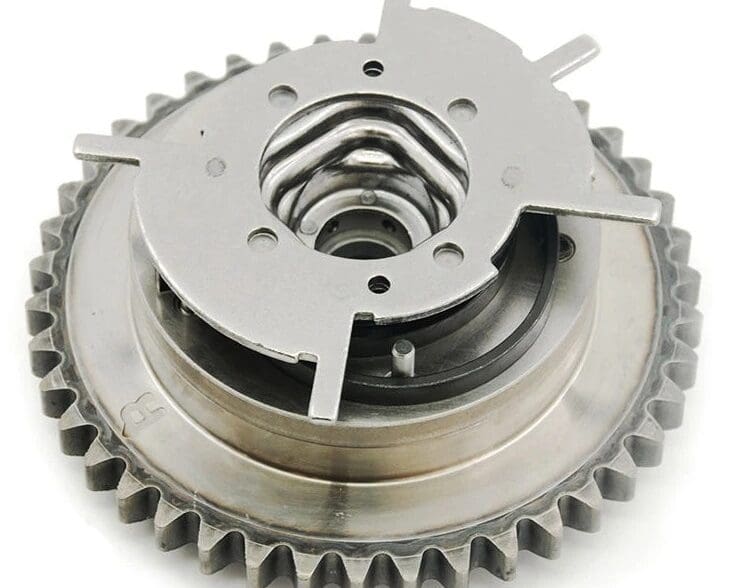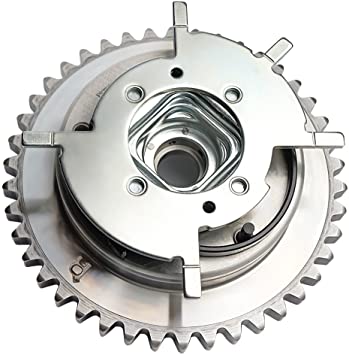What Are Cam Phasers?
A cam phaser is a sprocket which adjusts the position of an engine’s camshaft in relation to its crankshaft and is tuned with a computer-controlled servo. Camshafts control the timing of engine intake and exhaust valves which in turn decide how aggressively an engine performs. An aggressive camshaft will generate more horsepower than a mild camshaft but will also generate more heat, noise and consume more fuel than a mild camshaft.
The introduction of cam phasers changed all that. A cam phaser allows for variable valve timing and VVT allows engines to advance or retard camshaft timing, commonly known as phasing, on demand.
Cam Phaser Basics
While the crankshaft transfers power from the pistons down the drive-train it’s the camshaft which determines how much power, performance, emissions and fuel economy an engine can produce.
How long intake and exhaust valves stay open greatly determines how well an engine performs and this is entirely controlled by the camshaft. What a cam phaser does is adjust the timing of when intake and exhaust valves begin each cycle.
Advancing the timing will result in an engine’s valves opening sooner and result in a more mild performance. Conversely delaying or “retarding” the timing will increase power at the expense of fuel efficiency. The engine will be louder and more powerful when phased to open and close the valves a little later during piston stroke cycles.
Advance phasing a camshaft will also shift the RPM power band in favor of low RPM power and Delay phasing the camshaft will favor the top end high RPM throttle response.
Additional Information About Cam Phasers
Engines with two camshafts, known as dual-cam engines, have separate camshafts for intake and exhaust duties. In twin-cam engines a cam phaser can adjust their relative positions with each other and not just with the crankshaft. This allows the engine to adjust valve overlap, which is the amount of time both the intake and exhaust valves are both partially open.
This type of valve overlap adjustment is typically done with a computer control module and not by hand. Less valve overlap has the same effect as advancing the timing, the engine reduces high-end horsepower but is more manageable to drive. More valve overlap creates more top-end horsepower but negatively affects efficiency.
Some trucks, such as older Ford F150 models with the 4.6 to 5.4L engines, came with cam phasers already included. As these wear out and need replacing the engine begins to sound more like a race engine, it will idle more roughly. Cam phasers are located under the valve cover in front of the cam journals on Ford trucks.
Cam Phaser Replacement and Adjustment
Unfortunately, cam phasers are a critical engine component responsible for a great deal of moving parts. Because of that it’s not recommended that the average weekend mechanic undertake a cam phaser replacement themselves. It’s possible, sure, but it’s risky and often not required as several other conditions can mimic the same conditions a worn cam phaser creates.
If you plan to add or replace a cam phaser to your vehicle’s engine follow the manufacturer recommendation very closely, take your time and make sure you have all the required tools before you start. Keeping a good engine mechanic’s number on hand would also be recommended, adjusting cam phasers is an involved process.
When cam phasers go bad driving becomes less fuel efficient, noisier and engine stalling begins to happen more frequently. Throttle response will suffer and in the later stages your vehicle may start sounding like a race car but driving like a junker. Severe engine damage and increased wear are also possible when driving with bad cam phasers.



